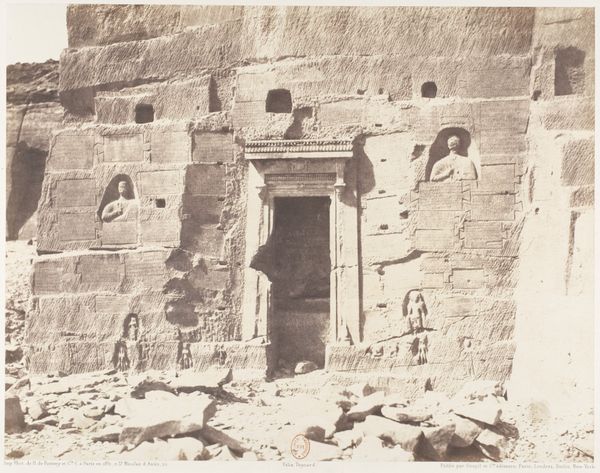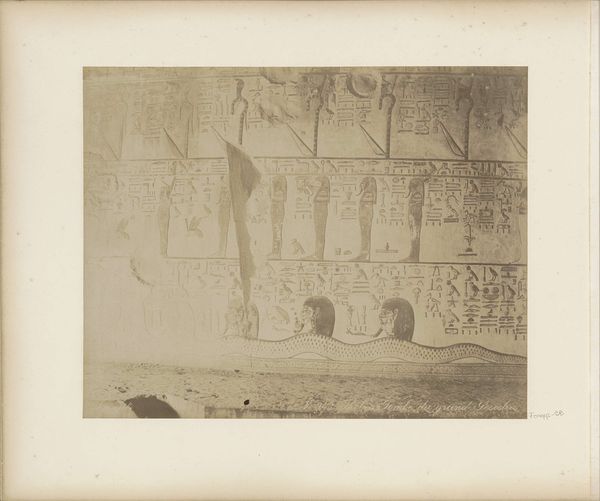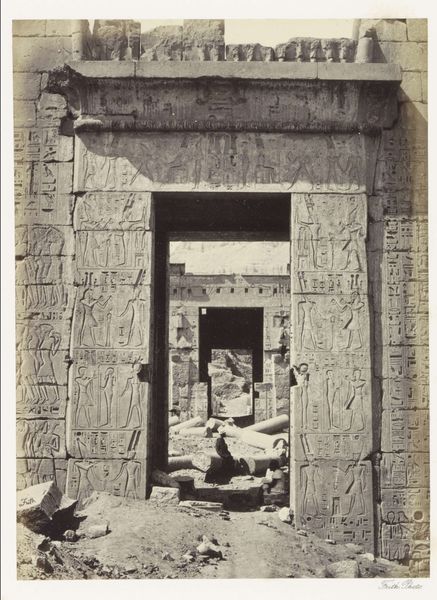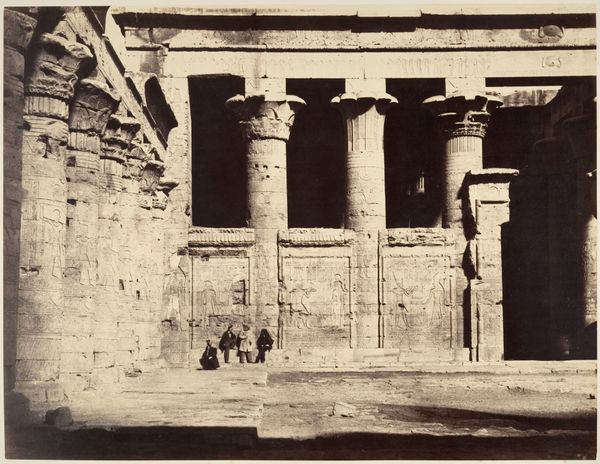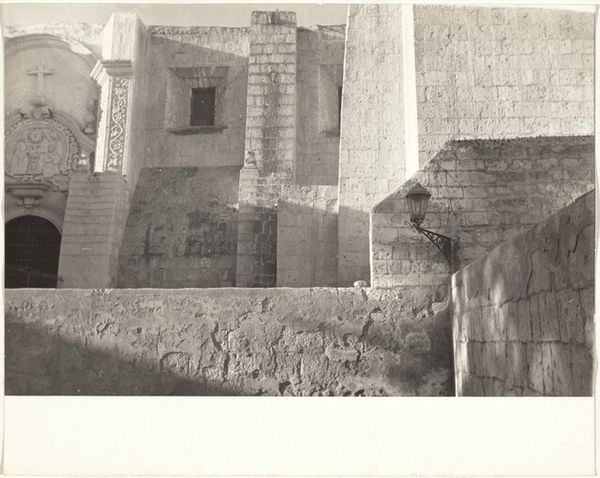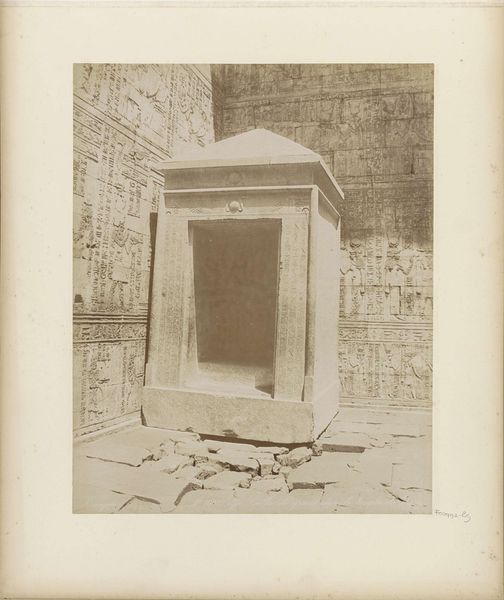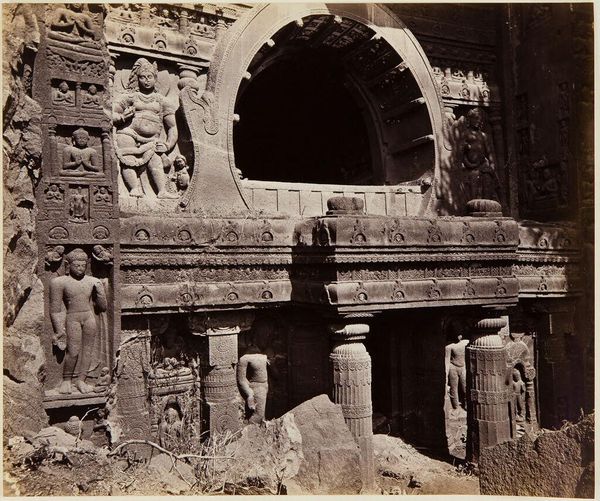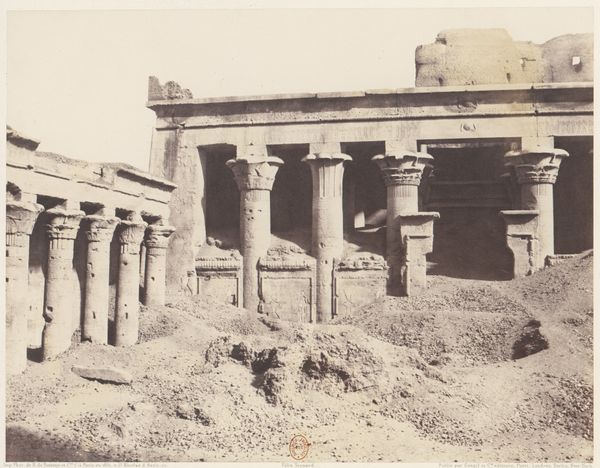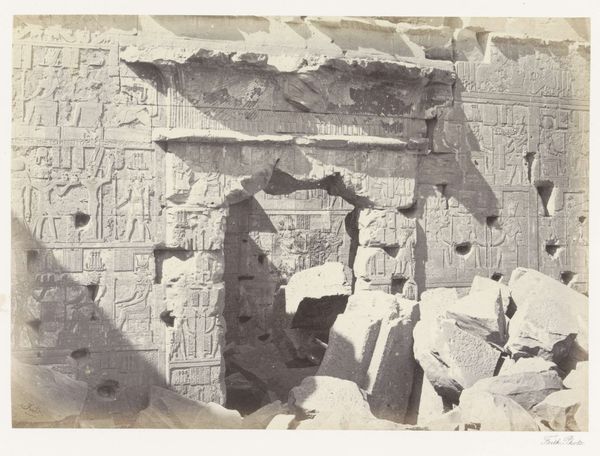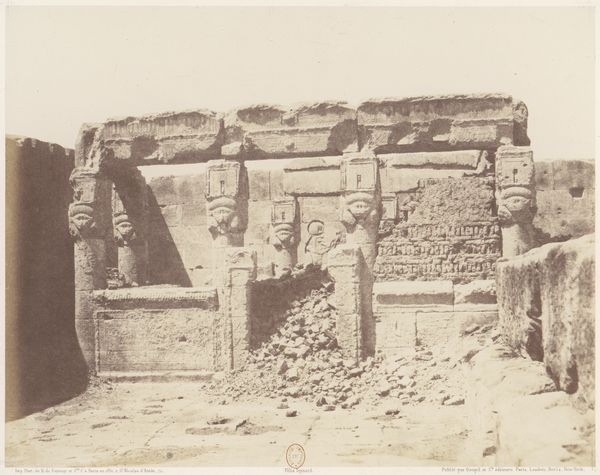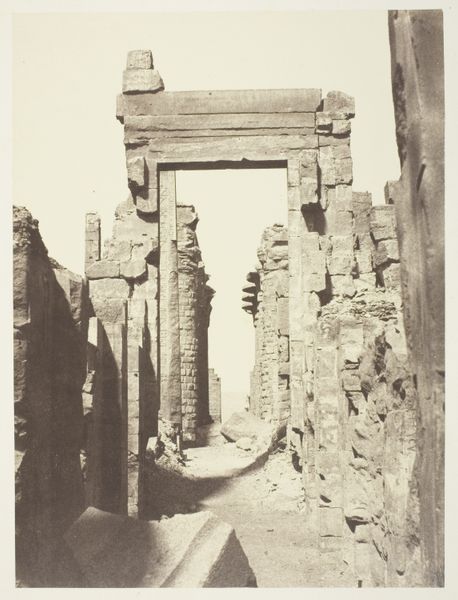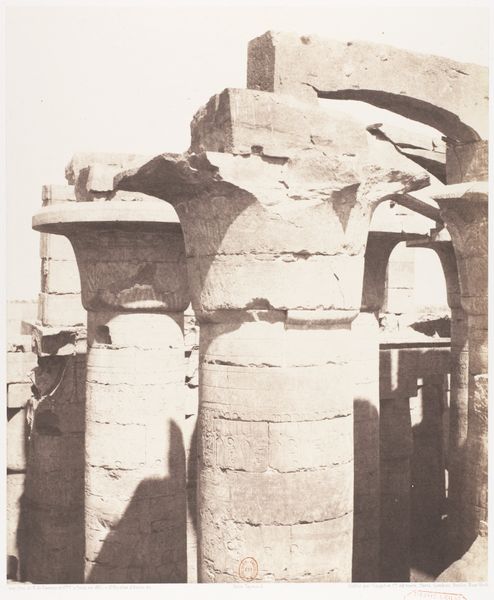
print, photography, albumen-print
#
photo restoration
# print
#
landscape
#
photography
#
ancient-mediterranean
#
cityscape
#
albumen-print
Dimensions: height 157 mm, width 217 mm
Copyright: Rijks Museum: Open Domain
Francis Frith captured this albumen print, "Kleitabletten bij de kiosk van Kertassi," sometime in the mid-19th century. Frith, a pioneering photographer, turned his lens to Egypt, documenting its ancient sites and monuments. The image shows stone tablets near a kiosk in Kertassi, their surfaces etched with inscriptions. The act of inscription itself is a form of labor, of course, a laborious process with hammer and chisel that speaks to the cultural significance and social context of ancient Egypt, where skilled artisans were commissioned to produce enduring records. Photography, itself a relatively new technology at the time, offered a different kind of labor. It was a process of capturing and reproducing images. Frith's work reflects a shift in modes of production and consumption, as photography democratized access to visual representations of distant lands. The image serves as both a record of ancient craftsmanship and an early example of industrial image-making. By emphasizing materials, making, and context, Frith's photograph challenges traditional distinctions between fine art and craft.
Comments
No comments
Be the first to comment and join the conversation on the ultimate creative platform.
